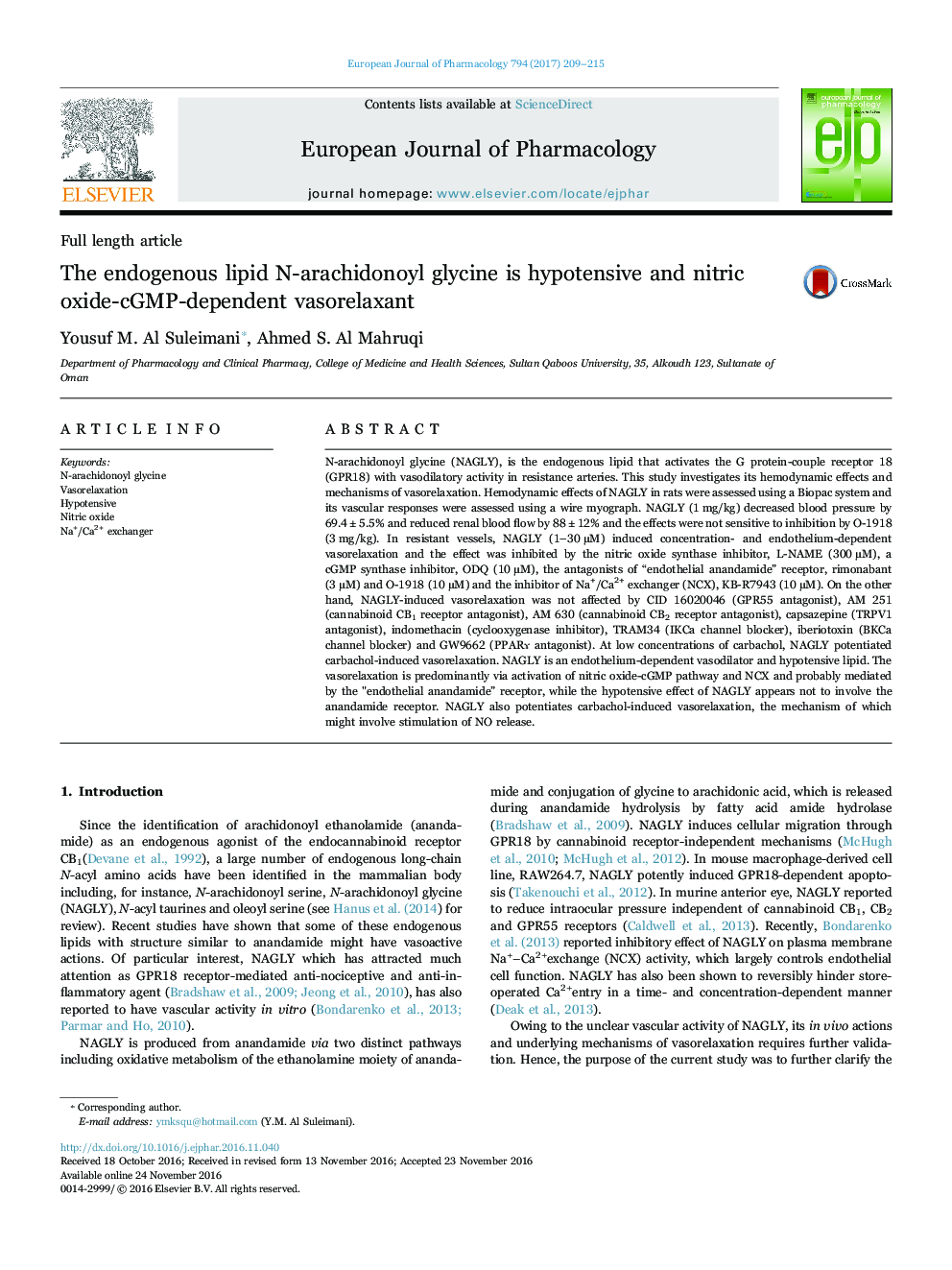| Article ID | Journal | Published Year | Pages | File Type |
|---|---|---|---|---|
| 5554907 | European Journal of Pharmacology | 2017 | 7 Pages |
N-arachidonoyl glycine (NAGLY), is the endogenous lipid that activates the G protein-couple receptor 18 (GPR18) with vasodilatory activity in resistance arteries. This study investigates its hemodynamic effects and mechanisms of vasorelaxation. Hemodynamic effects of NAGLY in rats were assessed using a Biopac system and its vascular responses were assessed using a wire myograph. NAGLY (1 mg/kg) decreased blood pressure by 69.4±5.5% and reduced renal blood flow by 88±12% and the effects were not sensitive to inhibition by O-1918 (3 mg/kg). In resistant vessels, NAGLY (1-30 µM) induced concentration- and endothelium-dependent vasorelaxation and the effect was inhibited by the nitric oxide synthase inhibitor, L-NAME (300 µM), a cGMP synthase inhibitor, ODQ (10 µM), the antagonists of “endothelial anandamide” receptor, rimonabant (3 µM) and O-1918 (10 µM) and the inhibitor of Na+/Ca2+ exchanger (NCX), KB-R7943 (10 µM). On the other hand, NAGLY-induced vasorelaxation was not affected by CID 16020046 (GPR55 antagonist), AM 251 (cannabinoid CB1 receptor antagonist), AM 630 (cannabinoid CB2 receptor antagonist), capsazepine (TRPV1 antagonist), indomethacin (cyclooxygenase inhibitor), TRAM34 (IKCa channel blocker), iberiotoxin (BKCa channel blocker) and GW9662 (PPARɤ antagonist). At low concentrations of carbachol, NAGLY potentiated carbachol-induced vasorelaxation. NAGLY is an endothelium-dependent vasodilator and hypotensive lipid. The vasorelaxation is predominantly via activation of nitric oxide-cGMP pathway and NCX and probably mediated by the "endothelial anandamide” receptor, while the hypotensive effect of NAGLY appears not to involve the anandamide receptor. NAGLY also potentiates carbachol-induced vasorelaxation, the mechanism of which might involve stimulation of NO release.
